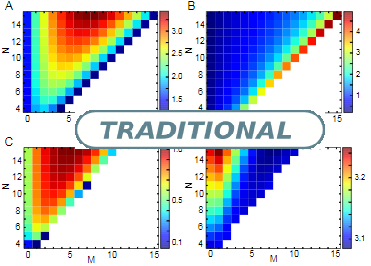Nonlinearity arising from noncooperative transcription factor binding enhances negative feedback and promotes genetic oscillations
DOI:
https://doi.org/10.4279/pip.060012Keywords:
genetic oscillations, negative feedback, cooperativityAbstract
We study the effects of multiple binding sites in the promoter of a genetic oscillator. We evaluate the regulatory function of a promoter with multiple binding sites in the absence of cooperative binding, and consider different hypotheses for how the number of bound repressors affects transcription rate. Effective Hill exponents of the resulting regulatory functions reveal an increase in the nonlinearity of the feedback with the number of binding sites. We identify optimal configurations that maximize the nonlinearity of the feedback. We use a generic model of a biochemical oscillator to show that this increased nonlinearity is reflected in enhanced oscillations, with larger amplitudes over wider oscillatory ranges. Although the study is motivated by genetic oscillations in the zebrafish segmentation clock, our findings may reveal a general principle for gene regulation.
Received: 3 August 2013, Accepted: 20 October 2014; Edited by: G. Mindlin; DOI: http://dx.doi.org/10.4279/PIP.060012
Cite as: I M Lengyel, D Soroldoni, A C Oates, L G Morelli, Papers in Physics 6, 060012 (2014)

Downloads
Published
How to Cite
Issue
Section
License
Copyright (c) 2014 Iván M. Lengyel, Daniele Soroldoni, Andrew C. Oates, Luis G. Morelli

This work is licensed under a Creative Commons Attribution 4.0 International License.
Authors agree to the PIP Copyleft Notice









